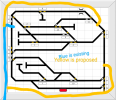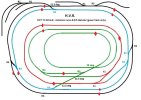duncan1_9_8_4
Garden Railway Operator
I have for many years had a garden railway now. I have only ever fed the power into the track at one point. Over the years, the circuit has got bigger, I have 3 turning circles fed directly from the track, from various locations. Along with 4 Massoth point decoders at various locations fed from the track also.
Getting to the point, I am thinking of feeding power into the track at other locations, such as the furthest point from the CS3, unlike now. Maybe feeding power in at an additional 4 locations.
Is this a worthwhile exercise?
Would it improve the reliability of the point decoders responding?
All the track has railclamps rather than original fishplates.....
I hate boring jobs, but the electrical side has always took a back seat, so I'm wanting to improve it.
Also, if I do, I am going to solder to the rail. Is solder weather proof?
Cheers
Paul
Getting to the point, I am thinking of feeding power into the track at other locations, such as the furthest point from the CS3, unlike now. Maybe feeding power in at an additional 4 locations.
Is this a worthwhile exercise?
Would it improve the reliability of the point decoders responding?
All the track has railclamps rather than original fishplates.....
I hate boring jobs, but the electrical side has always took a back seat, so I'm wanting to improve it.
Also, if I do, I am going to solder to the rail. Is solder weather proof?
Cheers
Paul


